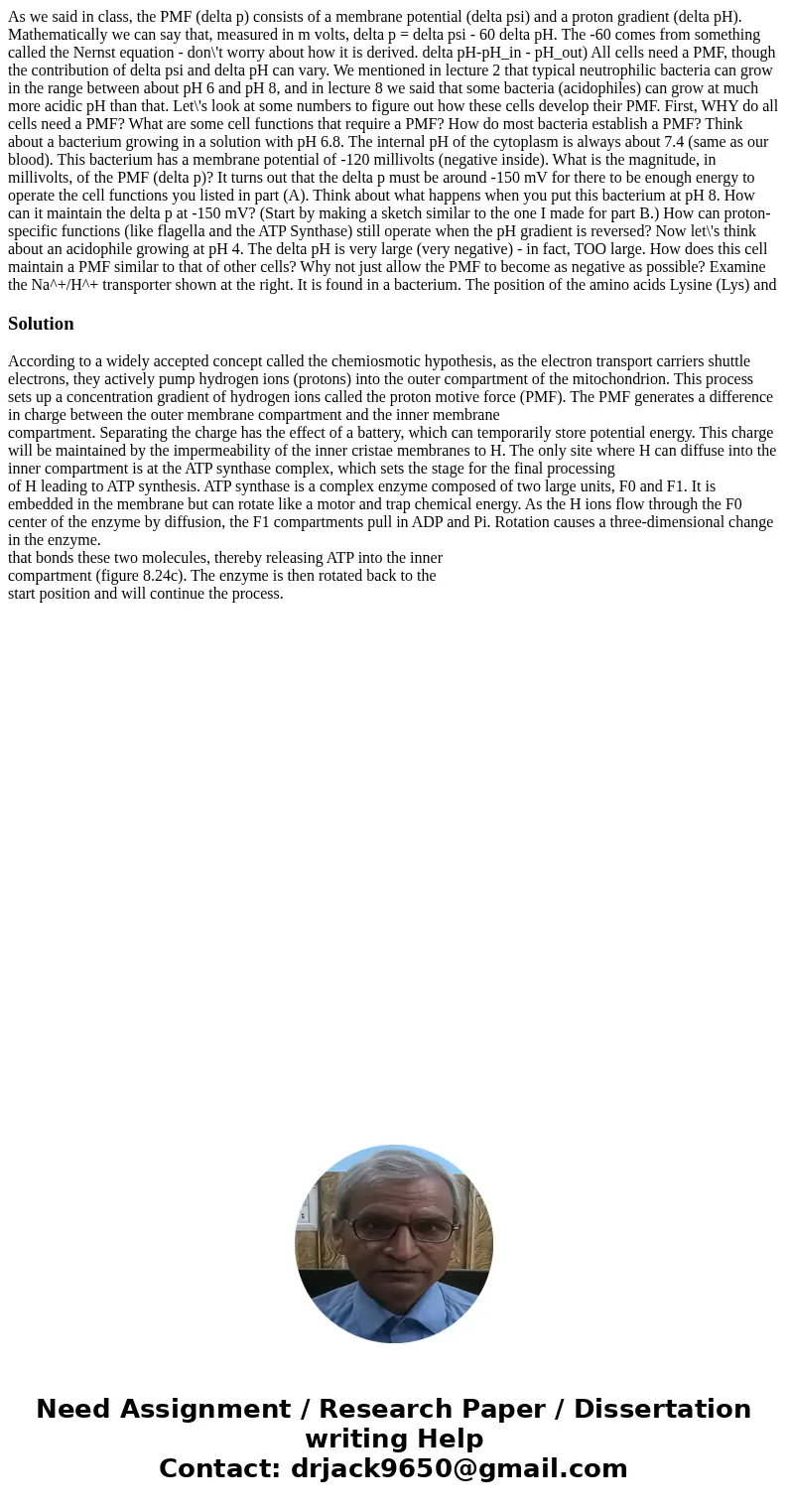As we said in class, the PMF (delta p) consists of a membrane potential (delta psi) and a proton gradient (delta pH). Mathematically we can say that, measured in m volts, delta p = delta psi - 60 delta pH. The -60 comes from something called the Nernst equation - don\'t worry about how it is derived. delta pH-pH_in - pH_out) All cells need a PMF, though the contribution of delta psi and delta pH can vary. We mentioned in lecture 2 that typical neutrophilic bacteria can grow in the range between about pH 6 and pH 8, and in lecture 8 we said that some bacteria (acidophiles) can grow at much more acidic pH than that. Let\'s look at some numbers to figure out how these cells develop their PMF. First, WHY do all cells need a PMF? What are some cell functions that require a PMF? How do most bacteria establish a PMF? Think about a bacterium growing in a solution with pH 6.8. The internal pH of the cytoplasm is always about 7.4 (same as our blood). This bacterium has a membrane potential of -120 millivolts (negative inside). What is the magnitude, in millivolts, of the PMF (delta p)? It turns out that the delta p must be around -150 mV for there to be enough energy to operate the cell functions you listed in part (A). Think about what happens when you put this bacterium at pH 8. How can it maintain the delta p at -150 mV? (Start by making a sketch similar to the one I made for part B.) How can proton-specific functions (like flagella and the ATP Synthase) still operate when the pH gradient is reversed? Now let\'s think about an acidophile growing at pH 4. The delta pH is very large (very negative) - in fact, TOO large. How does this cell maintain a PMF similar to that of other cells? Why not just allow the PMF to become as negative as possible? Examine the Na^+/H^+ transporter shown at the right. It is found in a bacterium. The position of the amino acids Lysine (Lys) and
According to a widely accepted concept called the chemiosmotic hypothesis, as the electron transport carriers shuttle electrons, they actively pump hydrogen ions (protons) into the outer compartment of the mitochondrion. This process sets up a concentration gradient of hydrogen ions called the proton motive force (PMF). The PMF generates a difference in charge between the outer membrane compartment and the inner membrane
compartment. Separating the charge has the effect of a battery, which can temporarily store potential energy. This charge will be maintained by the impermeability of the inner cristae membranes to H. The only site where H can diffuse into the inner compartment is at the ATP synthase complex, which sets the stage for the final processing
of H leading to ATP synthesis. ATP synthase is a complex enzyme composed of two large units, F0 and F1. It is embedded in the membrane but can rotate like a motor and trap chemical energy. As the H ions flow through the F0 center of the enzyme by diffusion, the F1 compartments pull in ADP and Pi. Rotation causes a three-dimensional change in the enzyme.
that bonds these two molecules, thereby releasing ATP into the inner
compartment (figure 8.24c). The enzyme is then rotated back to the
start position and will continue the process.

 Homework Sourse
Homework Sourse